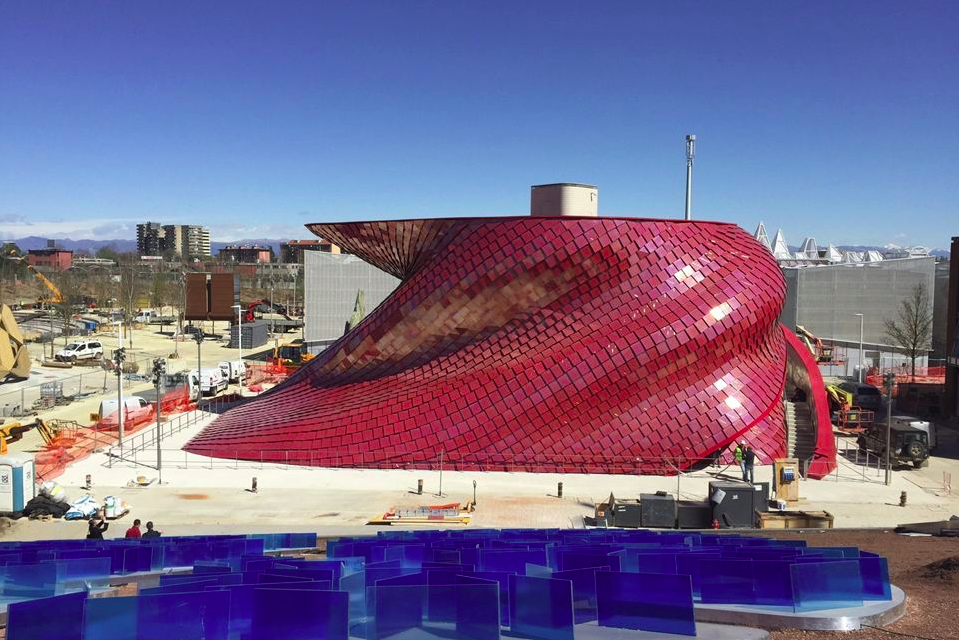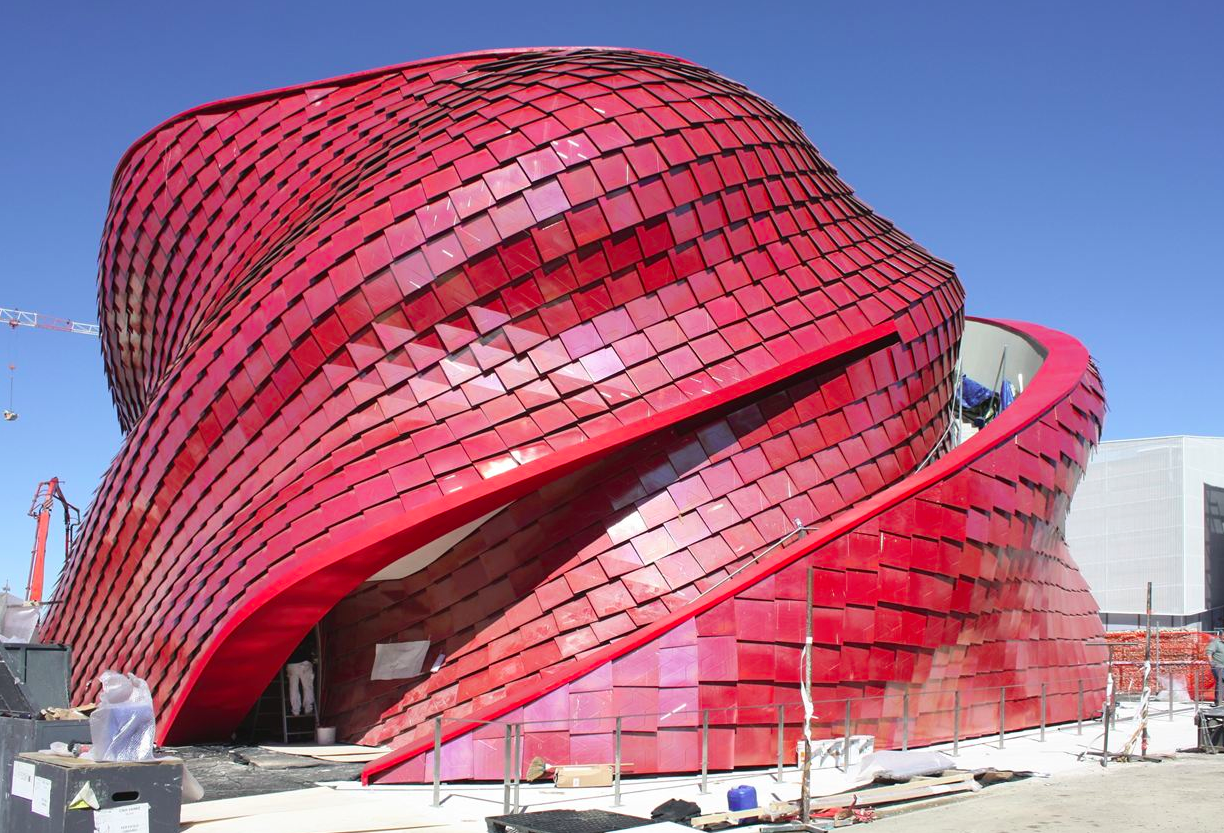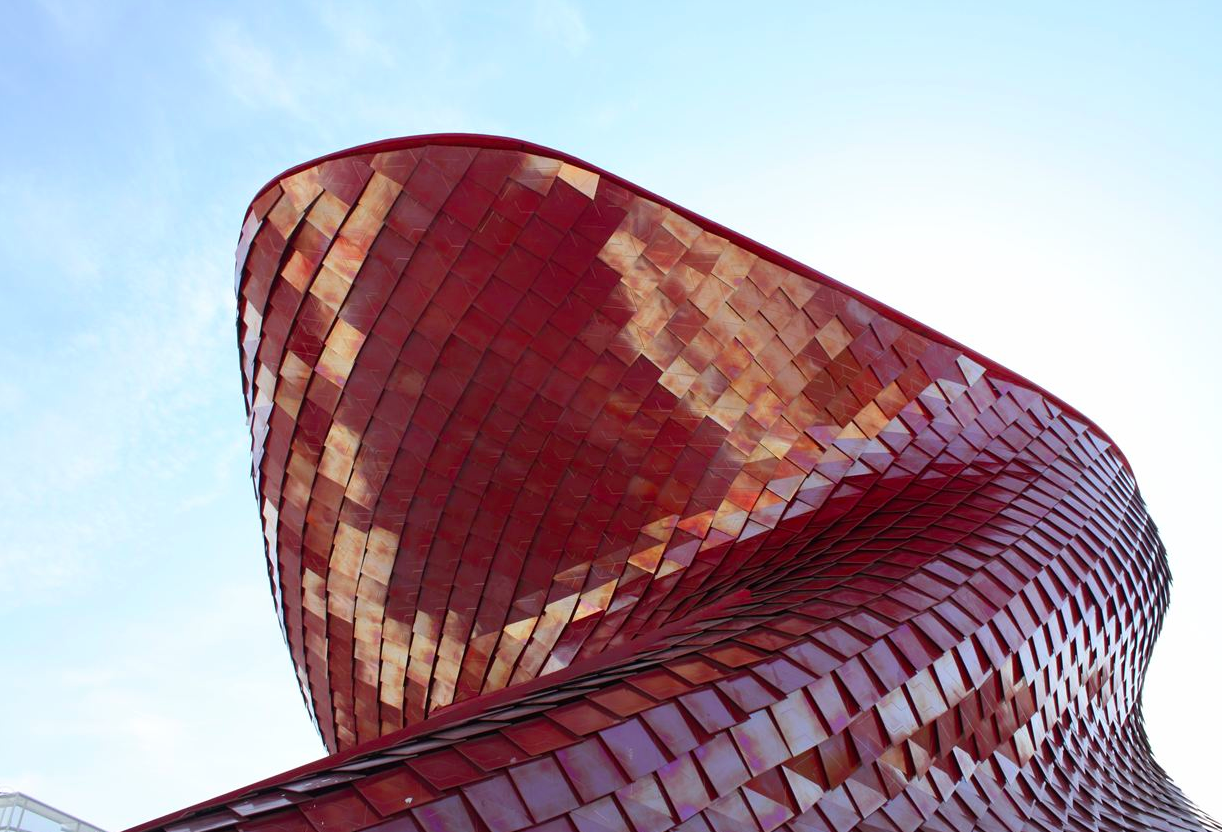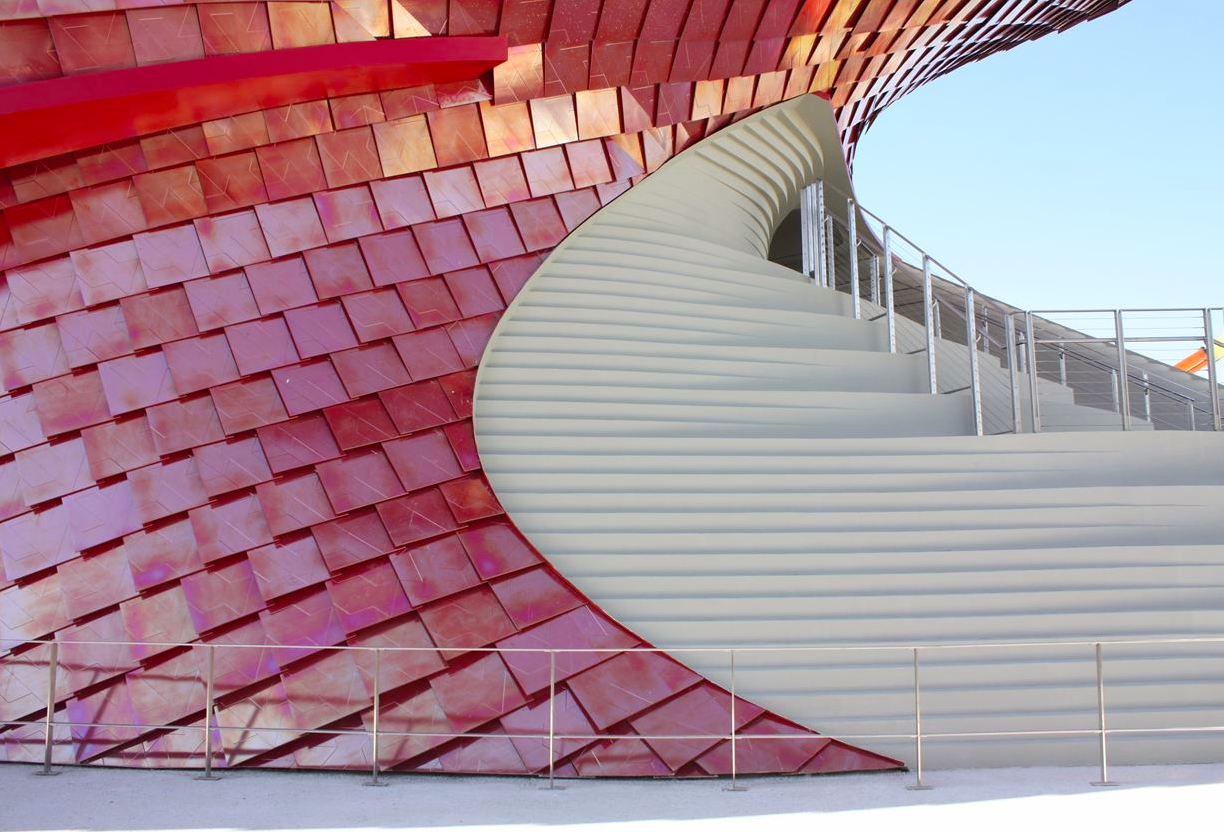Submitted by WA Contents
Daniel Libeskind’s Vanke pavilion “Shitang” realized and shining in Expo Milan 2015
United Kingdom Architecture News - May 01, 2015 - 10:31 11709 views

All images © Studio Libeskind/Archilovers page of Libeskind
Daniel Libeskind's Vanke pavilion “Shitang” realized and shining in Expo 2015 Milan with red wings and setted itself as a sculptural fragmentation beyond its symbolism.Expo 2015 in Milan has just opened today and will continue to 31 October 2015.
The concept for the pavilion was inspired by traditional Chinese landscape painting—rock formations, rice fields, and prehistoric outcrops. The pavilion aims to tell the story of civilization, technology and the 21st Century as well as offer a space for reflection and celebration of different cultures.

image © Studio Libeskind
Libeskind had enveiled is proposal one year ago as related to Expo theme ''Feeding the planet,Energy for Life'' by reimagining a traditional Chinese Shitang (dining hall).Apparently,the pavilion will be the most influential design in the Expo site by stressing its twisting,flowing and vivid form with the red clads covered with4,000 blood-red metal tiles.The pavilion also looks like a ''dragon'' that the curvilinear starcaises are attached to the pavilion,which relieves the structure by balancing the visual connection between dominant texture and color.

image © Studio Libeskind
The pavilion is clad in an innovative three-dimensional red metalized tile that Libeskind designed with the Italian company Casalgrande Padana, the geometric ceramic panels not only create an expressive pattern, but they possess highly sustainable self-cleaning and air purification properties. Inside visitors encounter a constellation of more than 300 screens mounted on a matrix of bamboo armatures. Short films weave throughout the series of screens capturing a glimpse into the everyday life of ordinary Chinese citizens expressing the importance of the Shitang in their daily lives.

image © Studio Libeskind
Each short film will loop at different intervals exploring the elements of Chinese culinary customs and everyday objects such as a cookbooks, table wear, and chopsticks.Chinese contemporary designer Han Jiaying gives these objects new life by rendering them in bold freehand brushstrokes and using folk handwriting to narrate the stories replayed in the films.

image © Studio Libeskind
Libeskind states that “For the Vanke Pavilion, I wanted to create a jewel—a place where people could gather, explore and experience something very Chinese and modern,” said Daniel Libeskind. “I drew from a spectrum of sources for the design—from the ancient writings of Confucius and Lao Zi to works from the Renaissance—with the goal of creating connections between many cultures,”

image © Studio Libeskind
Situated on the edge of the Lake Arena, 1000-square meter pavilion appears to rise from the east forming a dynamic vertical landscape.The design features a sinuous geometrical pattern that flows between inside and outside. The red serpentine form carves an opening up the middle to a grand staircase clad in a white mosaic tile. A roof-top observation desk will provide stunning views of the lake and near-by Italian pavilion.

image © Studio Libeskind